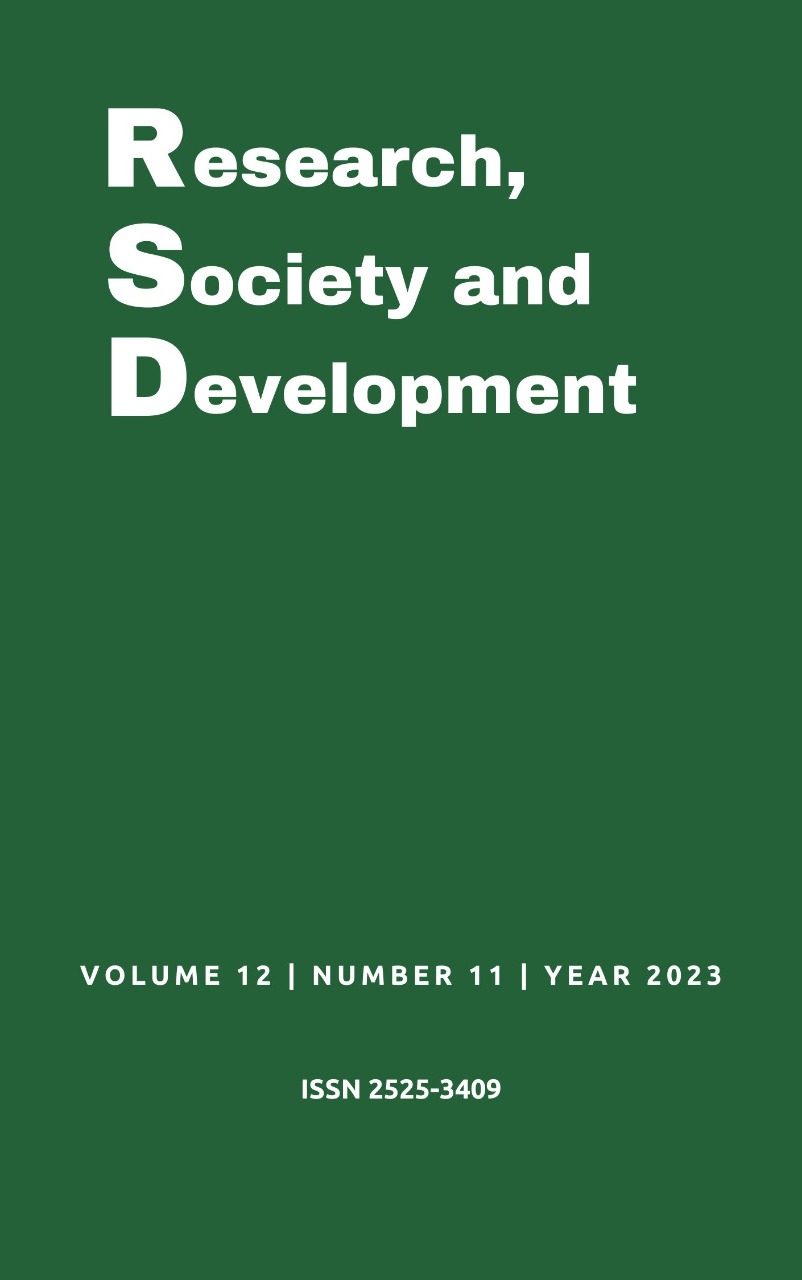Underreporting of congenital syphilis cases and its implications for infection: An integrative review
DOI:
https://doi.org/10.33448/rsd-v12i11.43575Keywords:
Syphilis; Congenital syphilis; Notification; Disease notification; Health information system.Abstract
Objective: To analyze the aspects involved in the underreporting of congenital syphilis (CS) cases and their implications for the management and/or treatment of the infection. Methods: The searches took place between February and May 2023 in five databases, LILACS, Web of Science, Scopus, Medline and PubMed. The criteria for selecting the articles were that they were available in full, answered the guiding question and were in any language. Results: From the research carried out, 81 results were obtained, but only 6 articles met the criteria imposed. Under-reporting and/or non-treatment can lead to negative outcomes such as miscarriage, fetal death and motor, cognitive, neurological, visual and auditory sequelae. Treatment can also be hampered by under-reporting, as this can jeopardize the supply of medication and consequently treatment failure. Difficulties on the part of professionals in terms of notification are also portrayed in the studies, which compromises the data provided in the Notifiable Diseases Information System (SINAN), resulting in underreporting of CS cases, and making it difficult for government bodies to act with promotion, prevention and appropriate treatment actions. Conclusions: It can be concluded that the underreporting of CS has multiple causes and that failure to complete the notification form has a direct negative impact on maternal and child health.
References
Almeida, A. S. et al. (2021). Sífilis na gestação, fatores associados à sífilis congênita e condições do recém-nascido ao nascer. Texto e Contexto Enfermagem, 30(e20200423), 1-13.
Alves, P. I. C. et al. (2020). Evolução temporal e caracterização dos casos de sífilis congênita em Minas Gerais, Brasil, 2007-2015. Ciência e saúde coletiva, 25(8), 2949-2960.
Belo, M. M. A. et al. (2021). Estimativa da subnotificação dos óbitos por sífilis congênita no Recife, Pernambuco, 2010-2016: relacionamento entre os sistemas de informações sobre mortalidade e de agravos de notificação. Epidemiol. Serv. Saúde, 30(3), 1-9.
Benzaken, A. S. et al. (2020). Adequacy of prenatal care, diagnosis and treatment of syphilis in pregnancy: a study with open data from Brazilian state capitals. Cad Saúde Pública, 36(1), 1-13.
Brasil, Ministério da Saúde. (2022). Secretaria de Vigilância em Saúde. Departamento de Doenças de Condições Crônicas e Infecções Sexualmente Transmissíveis. Brasília. https://www.gov.br/saude/pt-br/centrais-de-conteudo/publicacoes/boletins/epidemiologicos/especiais/2022/boletim-epidemiologico-de-sifilis-numero-especial-out-2022/view.
Brasil, Ministério da Saúde. (2017). Secretaria de Vigilância em Saúde. Brasília. http://antigo.aids.gov.br/pt-br/pub/2017/boletim-epidemiologico-de-sifilis-2017.
Brito, C. V. B., Formigosa, C. A. C., & Neto, O. S. M. (2022). Impacto da COVID-19 em doenças de notificação compulsória no Norte do Brasil. Rev Bras Promoção Saúde, 35(12777), 1-11.
Canto, S. V. E. et al. (2019). Fetal and infant mortality of congenital syphilis reported to the Health Information System. Plos one, 14(1), 1-11.
Carvalho, M. C. J. et al. (2022). Mudanças de incidência e classificações clínicas da sífilis em gestantes pela pandemia do COVID - 19. Research Society and Development, 11(4), 1-11.
Domingues, C. S. V. et al. (2021). Protocolo Brasileiro para Infecções Sexualmente Transmissíveis 2020: vigilância epidemiológica. Epidemiol Serv Saúde, 30(1), 1-12.
Heath, K. et al. (2022). WHO method for estimating congenital syphilis to inform surveillance and service provision Paraguay. Bull World Health Organ, 100, 231-236.
Lucio, P. C. et al. (2023). Sífilis congênita e gestacional no Sudeste Brasileiro. Saúde Meio Ambient, 12, 107-122.
MacieL, D. P. A. et al. (2023). Mortalidade por sífilis congênita: Revisão sistemática. Rev Mult Saúde, 4(1), 106-116.
MOHER, D. et al. (2009). Preferred Reporting Items for Systematic Reviews and Meta-Analyses: The PRISMA Statement. Plos Medicine, 151(4), 1-6.
Oliveira, I. M., Oliveira, R. P. B., & Alves, R. R. F. (2020). Diagnóstico, tratamento e notificação da sífilis durante a gestação em Goiás de 2007 a 2017. Rev Saude Pública, 55(68), 1-9.
Santos, P. et al. (2023). Sífilis congênita no Paraná: uma análise de série histórica (2012-2021). Spac Saúde, 24(e931), 1-14.
Silva, A. A. O. et al. (2022). Spatiotemporal distribution analysis of syphilis in Brazil: Cases of congenital and syphilis in pregnant women from 2001–2017. Plos one, 17(10), 1-19.
Serruya, S. J. et al. (2015). Maternal and congenital syphilis in selected Latin America and Caribbean countries: a multi-country analysis using data from the Perinatal Information System. Sexual Health, 12(2), 164-169.
Soares, M. A. S., & Aquino, R. (2021). Completude e caracterização dos registros de sífilis gestacional e congênita na Bahia, 2007-2017. Epidemiol. Serv. Saúde, 30(4), 1-11.
Swayze, E. J. et al. (2021). Failure to recognize Low non treponemal titer syphilis infections in pregnancy May lead to widespread under-treatment. International Journal of Infectious Diseases, 104, 27-33.
Vescovi, J. S., & Trevisol, F. S. (2020). Aumento da incidência de sífilis congênita no estado de Santa Catarina no período de 2007 a 2017: análise da tendência temporal. Rev Paul Pediatr, 38(e2018390), 1-8.
Downloads
Published
How to Cite
Issue
Section
License
Copyright (c) 2023 Thaís Latanzio Soares de Almeida; Ana Paula Pinho Carvalheira; Ivana Regina Gonçalves; Anelisa Soares de Almeida

This work is licensed under a Creative Commons Attribution 4.0 International License.
Authors who publish with this journal agree to the following terms:
1) Authors retain copyright and grant the journal right of first publication with the work simultaneously licensed under a Creative Commons Attribution License that allows others to share the work with an acknowledgement of the work's authorship and initial publication in this journal.
2) Authors are able to enter into separate, additional contractual arrangements for the non-exclusive distribution of the journal's published version of the work (e.g., post it to an institutional repository or publish it in a book), with an acknowledgement of its initial publication in this journal.
3) Authors are permitted and encouraged to post their work online (e.g., in institutional repositories or on their website) prior to and during the submission process, as it can lead to productive exchanges, as well as earlier and greater citation of published work.

